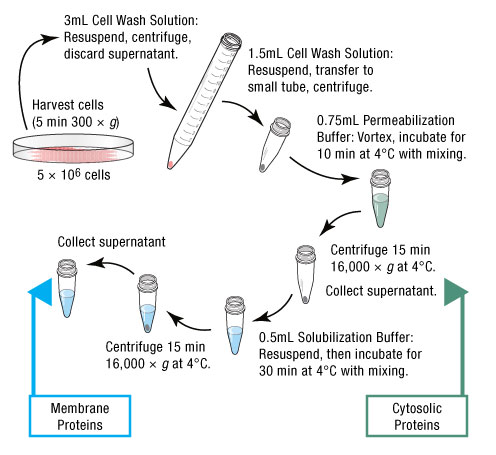Membrane Protein
Critical to many cellular functions, such as signal transduction, material transport, and intercellular communication. Membrane proteins and receptors are also the most studied class of drugs in the pharmaceutical industry. Currently about two-thirds of therapeutic molecules target one or more membrane proteins. It is well known that the crystal structure of membrane proteins can help elucidate its function and discover its mechanism of interaction with drug molecules. However, although the abundance of membrane proteins in the cellular proteome is high (20-30%), only 0.1% of the crystal structure has been determined so far.
Where is the bottleneck? lack of
extract
Reagents and protocols are unable to obtain a sufficient amount of membrane protein for crystallization from various cell types. There are many strategies for extracting membrane proteins from eukaryotic cell lines and tissues, including subcellular fractional separation (sucrose density gradient centrifugation), TritonTM X-114 detergent method, high salt or high pH buffer. But most methods are time consuming and labor intensive and require expensive ultracentrifugation equipment.Thermo Fisher
Previously launched by PierceMem-PER
The kit is also based on TritonTM X-114, but the operation is cumbersome and the extracted hydrophobic fragments require further processing for downstream operations. To this end, Pierce recently introduced a new generation of membrane protein extraction kit - Mem-PER Plus kit. It simply and efficiently enriches intrinsic membrane proteins and membrane-associated proteins, and requires only a small centrifuge.Integral membrane proteins differ from peripheral membrane proteins in that they differ in binding strength to the membrane. Intrinsic membrane proteins have one or two transmembrane regions that need to be efficiently solubilized and separated from intracellular proteins. This kit is suitable for both mammalian cells and hard or soft tissues. Plus has many advantages over previous Mem-PER kits, and its operation is simpler. Its components are directly compatible with many downstream applications such as SDS-PAGE, Western blot, BCA and immunoprecipitation.
Mem-PER Plus utilizes a mild detergent to selectively enrich intrinsic membrane proteins and membrane associated proteins. Through this selective extraction method, the cumbersomeness of the hydrophobic phase separation method is avoided, and better repeatability and higher throughput are achieved.

The cells are first lysed with a mild detergent to release the soluble proteins in the cells, followed by a second detergent to dissolve the membrane proteins. The entire process can be completed in less than an hour, no special equipment is required, as long as there are bench top centrifuges, homogenizers and pipettes. Of course, extraction efficiency and yield vary depending on cell type and are also related to the number of transmembrane. It has been reported that membrane protein extraction efficiency with one or two transmembrane regions is as high as 90%, and intracellular protein contamination is usually no more than 10%.
Elisa
Kit
, elisakit,
Shanghai
Elisa
Experimental survey
, SOD
Kit
, IgG
Kit
, IgM
Kit
, WB
Experimental generation
,
Immunohistochemistry experiment
,
Free test
,GIBCO,AMRESCO-
Shanghai Xinfan Biological
Digital Air Fryer,Best Digital Air Fryer,Digital Oil Less Fryer,Electric Digital Air Fryer
Ningbo ATAP Electric Appliance Co.,Ltd , https://www.atap-airfryer.com